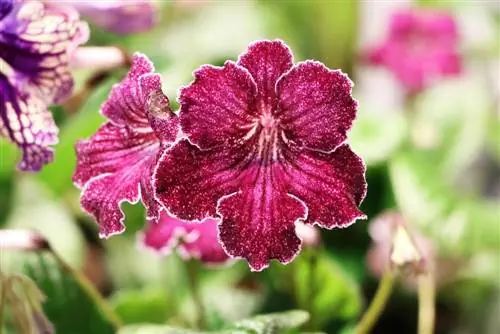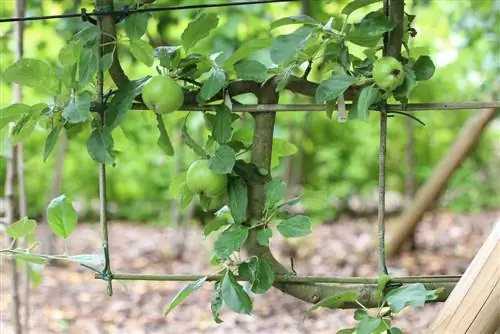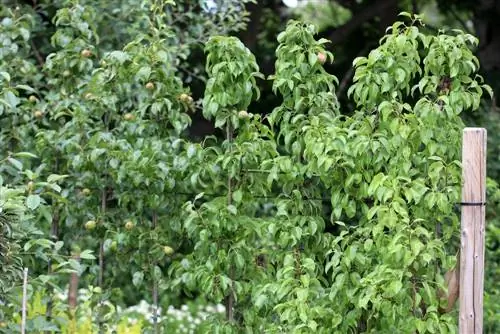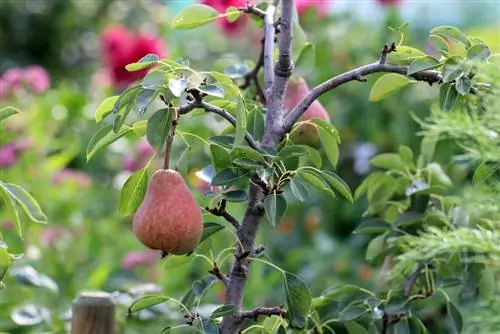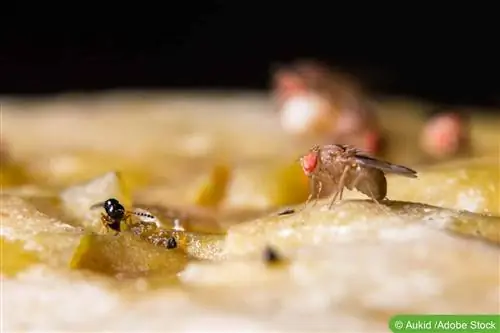- Author admin [email protected].
- Public 2023-12-17 03:39.
- Last modified 2025-01-24 12:45.
There are well over 100 Streptocarpus species that come from tropical forests in continental Africa or Madagascar. There are both annual and perennial (perennial) species. These plants are mainly cultivated as houseplants. The rotary fruit owes its name to its seeds, which ripen in a spiral-shaped capsule.
Appearance of rotating fruit
The plant is evergreen, rarely woody. There are varieties that produce only one leaf, most produce several leaves arranged in a rosette shape. There are rotary fruits with and without flower stalks. The flowers of all species are always fivefold, and the color varies from light pink to red to dark purple. The plant usually flowers from April to October. Almost every year new, attractive varieties of rotary fruit come onto the market:
- The species 'Constant Nymph', whose blue or pink flowers are streaked with darker stripes, is popular.
- Streptocarpus saxorum has branched stems, the flowers are mostly white and decorated with fine hairs.
- The Streptocarpus Rexii variety is characterized by long flower stalks and blue, effective flowers.
Optimal location for the rotary fruit
Rotating fruits are used as houseplants because of their tropical origins. These plants are also suitable for the heated winter garden. They don't feel comfortable outdoors. The suitable place for this plant is on the windowsill during the flowering period and at the same time protected from direct sunlight. Windows that face northwest or northeast provide optimal conditions.
Winter quarters
In general, the Streptocarpus plant does not need any special winter quarters, but feels more comfortable during the resting period in a location where it receives relatively little light and where temperatures are cool (approx. 12°C). These conditions exist in a winter garden or in another room that is only sparingly heated in winter (e.g. stairwell or bedroom). Rotary fruit does not like dark locations, and the plant should also be watered in the winter months.
Soil and fertilizers
- Rotate fruits show good growth when they are planted in loose, humus-rich soil with the addition of peat. Peat growing medium is also a good solution.
- These plants do not need to be fertilized too often; liquid fertilizer for flowering houseplants can be added every 14 days.
- The fertilizer can be administered in a highly diluted form.
Watering and spraying rotary fruit
As a tropical plant, rotary fruit likes moist soil. Since sensitive leaves begin to rot if they are too wet, it is recommended to water over the base. If a plant has wilted from too little fluid, a dip can often bring it back to life. The water should preferably be lukewarm and the water should be able to drain off easily after the immersion bath. Rotary fruit feels comfortable in moist air, but does not like direct spraying, as in this case its leaves and flowers change color.
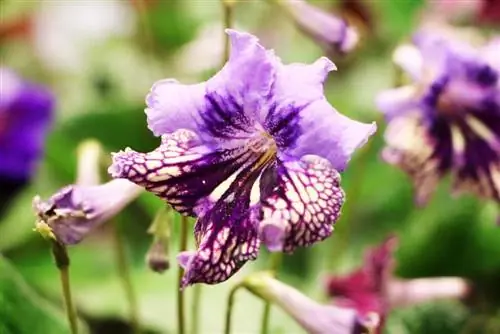
Aside from regular watering and fertilizing, rotary crops don't need much care. Wilted or rotten leaves and flowers should be removed. This not only improves the appearance of the plant, but also prevents the spread of diseases. It is advisable to also remove the fruit capsules. As soon as these have formed after flowering, they are carefully cut off. This process encourages the streptocarpus to form more flowers - thus extending the flowering period.
Repotting rotary fruit
Rotary fruits are shallow-rooted plants, which is why these plants thrive best in bowl-shaped containers. If the container becomes too narrow, rotary fruits can be moved to a larger (also shallow) pot. There are two optimal times of the year when the rotary fruit can be repotted - once after the end of the flowering period, i.e. from the end of October, and again shortly before the flowering period, i.e. at the end of March.
Propagate Rotary Fruit
Streptocarpus can be propagated without much effort. Most cultivated forms (with the exception of Streptocarpus Saxorum) can be propagated through leaf cuttings. Propagation takes place in spring by removing a larger, he althy leaf and cutting it into three to four parts. These parts are inserted approximately one centimeter deep into the soil with the cut edge facing downwards (a loose mixture of sand and peat is ideal). Now it's important to be patient. In a bright, warm place that is not exposed to direct sunlight, the leaf parts take root after about five weeks. Young plants are formed, which, as soon as they are more than seven centimeters tall, are separated from the mother leaf and repotted into individual bowls. In contrast to other species, Streptocarpus Saxorum is propagated by top cuttings, i.e. shoots. The shoots form in spring. As soon as they have reached a size of at least seven centimeters, they are cut off and planted one to two centimeters deep in loose soil. As with leaf cuttings, a mixture of peat and sand is recommended. In a bright location, protected from direct sun, and in moist soil, the young plants take root and begin to grow. They usually don't bloom until next year.
Pests and diseases
Rotary fruit is one of the resilient plants overall, but there are some aspects to consider when caring for it and choosing the location. If the room temperatures are too low, the plant can suffer from gray mold. If the humidity is too high and the room is poorly ventilated, there is a risk of powdery mildew. The affected areas must be carefully removed and the plant treated with the appropriate anti-fungal agent.
What you should know about rotary fruit in brief
With proper care, Streptocarpus delights with magnificent flowers for several months of the year. Rotary fruit is a beautiful and relatively undemanding ornamental plant that is also easy to propagate. It originally comes from the tropical rainforests of South Africa and Madagascar. The rotary fruit impresses with its beautiful flowers in many colors.
- tropical plant from Africa;
- effective flowers in different colors;
- ideal for rooms or heated conservatories;
- loves warmth, does not tolerate direct sunlight;
- needs loose, humus-rich soil and a flat container;
- requires cool temperatures in winter;
- can be easily propagated
Location
The location should be bright, but without direct sunlight. An east or west window is ideal. The plants always like the same lighting conditions. It is often best to place them near a window so that they get enough light for photosynthesis. Room temperature is sufficient all year round. If the temperatures are above 24 ˚C, the humidity must be increased. You shouldn't spray; a saucer filled with pebbles and water is better. If there is poor ventilation and high humidity, the rotary fruit tends to be affected by powdery mildew.
Planting substrate
Soil rich in humus is best suited. A mixture of humus-rich soil and coarse-fiber peat is ideal. You can mix in a little carbonated lime, the plants like that. The planter should be as flat as possible, because rotating crops have shallow roots. Repot when the pot is well rooted. The best time for this is after flowering or in spring.
Watering and fertilizing
The rotary fruit must be watered regularly and as evenly as possible. The pot ball should be evenly moist, but not wet. Before watering again, allow the top layer of soil to dry a little. The irrigation water should be lime-free, because the plants don't like lime at all. It's best to use rainwater. When watering, make sure to only water on the soil and not on or between the leaves. This often leads to rotting of the leaves and flower shoots. Fertilize every 14 days with a commercially available flowering plant fertilizer.

